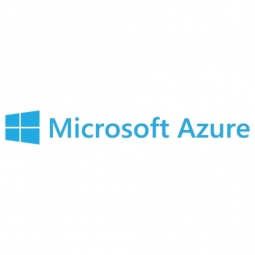下载PDF
Enhancing Workplace Relationships with IoT: A Case Study of ACAS
技术
- 平台即服务 (PaaS) - 应用开发平台
适用行业
- 水泥
- 建筑与基础设施
用例
- 施工管理
- 基础设施检查
挑战
咨询、调解和仲裁服务处 (ACAS) 是一个由英国政府资助的独立公共机构,每年与数百万雇主和雇员合作,以改善工作场所关系。该组织的使命是通过促进和促进强有力的劳资关系实践来增强英国的组织和工作生活。然而,为了有效地提供服务,ACAS 需要一个有弹性的技术平台。如果没有这样的平台,组织将无法联系客户并提供他们迫切需要的服务。 2018 年,ACAS 经过数字战略审查后决定采用“云优先”方法。我们面临的挑战是找到一种云解决方案,不仅要符合他们的数字战略,还要确保最高的安全性。
关于客户
咨询、调解和仲裁服务处 (ACAS) 是一个独立的公共机构,接受英国政府的资助。它每年与数百万雇主和雇员合作,改善工作场所关系。通过其工作,它通过促进和促进强有力的劳资关系实践来改善英国的组织和工作生活。该组织是中型组织,拥有 50 至 999 名员工,总部位于英国。 ACAS 致力于利用技术来增强其服务,并采用“云优先”方法作为其数字战略的一部分。
解决方案
ACAS 决定迁移到 Microsoft Azure,这一决定符合他们成为云优先组织的数字战略。此举也是出于增强安全性的需要,这是 ACAS 的一个关键考虑因素。通过将其本地基础设施迁移到 Microsoft Azure,ACAS 能够将其运行成本减半。此外,当 COVID-19 封锁导致在家工作激增时,ACAS 已做好应对准备。作为其数字战略的一部分,该组织已经向所有员工推出了新的 Windows 10 笔记本电脑,并拥有支持在家工作的文化。 Microsoft 技术(尤其是 Microsoft Teams)使 ACAS 能够快速召开会议并继续向客户提供服务。
运营影响
数量效益
相关案例.

Case Study
System 800xA at Indian Cement Plants
Chettinad Cement recognized that further efficiencies could be achieved in its cement manufacturing process. It looked to investing in comprehensive operational and control technologies to manage and derive productivity and energy efficiency gains from the assets on Line 2, their second plant in India.

Case Study
IoT System for Tunnel Construction
The Zenitaka Corporation ('Zenitaka') has two major business areas: its architectural business focuses on structures such as government buildings, office buildings, and commercial facilities, while its civil engineering business is targeted at structures such as tunnels, bridges and dams. Within these areas, there presented two issues that have always persisted in regard to the construction of mountain tunnels. These issues are 'improving safety" and "reducing energy consumption". Mountain tunnels construction requires a massive amount of electricity. This is because there are many kinds of electrical equipment being used day and night, including construction machinery, construction lighting, and ventilating fan. Despite this, the amount of power consumption is generally not tightly managed. In many cases, the exact amount of power consumption is only ascertained when the bill from the power company becomes available. Sometimes, corporations install demand-monitoring equipment to help curb the maximum power demanded. However, even in these cases, the devices only allow the total volume of power consumption to be ascertained, or they may issue warnings to prevent the contracted volume of power from being exceeded. In order to tackle the issue of reducing power consumption, it was first necessary to obtain an accurate breakdown of how much power was being used in each particular area. In other words, we needed to be able to visualize the amount of power being consumed. Safety, was also not being managed very rigorously. Even now, tunnel construction sites often use a 'name label' system for managing entry into the work site. Specifically, red labels with white reverse sides that bear the workers' names on both sides are displayed at the tunnel work site entrance. The workers themselves then flip the name label to the appropriate side when entering or exiting from the work site to indicate whether or not they are working inside the tunnel at any given time. If a worker forgets to flip his or her name label when entering or exiting from the tunnel, management cannot be performed effectively. In order to tackle the challenges mentioned above, Zenitaka decided to build a system that could improve the safety of tunnel construction as well as reduce the amount of power consumed. In other words, this new system would facilitate a clear picture of which workers were working in each location at the mountain tunnel construction site, as well as which processes were being carried out at those respective locations at any given time. The system would maintain the safety of all workers while also carefully controlling the electrical equipment to reduce unnecessary power consumption. Having decided on the concept, our next concern was whether there existed any kind of robust hardware that would not break down at the construction work site, that could move freely in response to changes in the working environment, and that could accurately detect workers and vehicles using radio frequency identification (RFID). Given that this system would involve many components that were new to Zenitaka, we decided to enlist the cooperation of E.I.Sol Co., Ltd. ('E.I.Sol') as our joint development partner, as they had provided us with a highly practical proposal.

Case Study
Splunk Partnership Ties Together Big Data & IoT Services
Splunk was faced with the need to meet emerging customer demands for interfacing IoT projects to its suite of services. The company required an IoT partner that would be able to easily and quickly integrate with its Splunk Enterprise platform, rather than allocating development resources and time to building out an IoT interface and application platform.

Case Study
Bridge monitoring in Hamburg Port
Kattwyk Bridge is used for both rail and road transport, and it has played an important role in the Port of Hamburg since 1973. However, the increasing pressure from traffic requires a monitoring solution. The goal of the project is to assess in real-time the bridge's status and dynamic responses to traffic and lift processes.

Case Study
Bellas Landscaping
Leading landscaping firm serving central Illinois streamlines operations with Samsara’s real-time fleet tracking solution: • 30+ vehicle fleet includes International Terrastar dump trucks and flatbeds, medium- and light-duty pickups from Ford and Chevrolet. Winter fleet includes of snow plows and salters.






